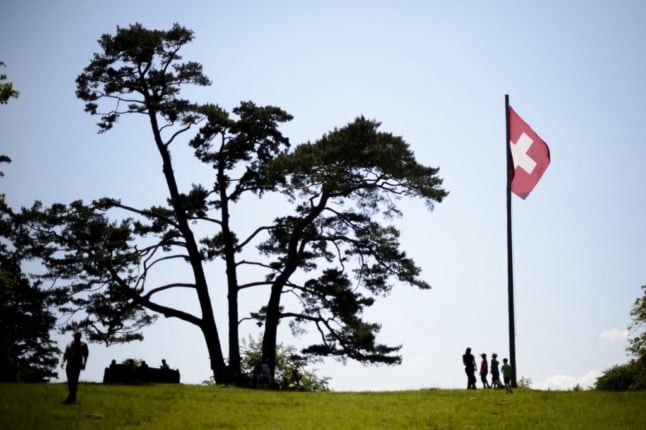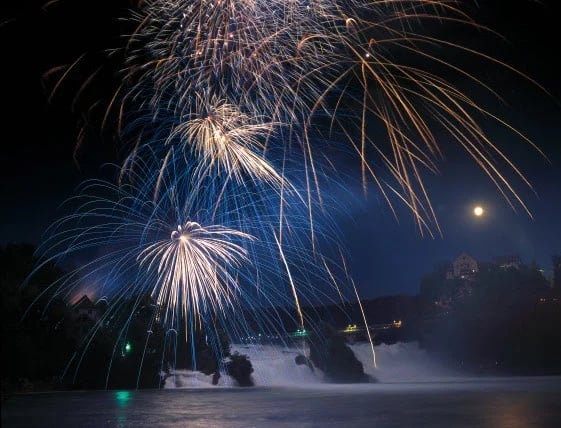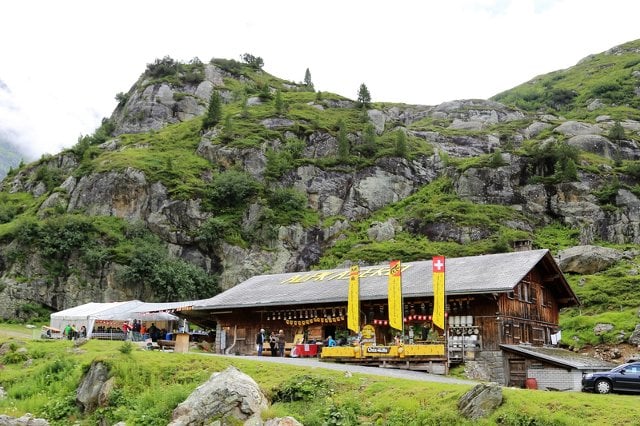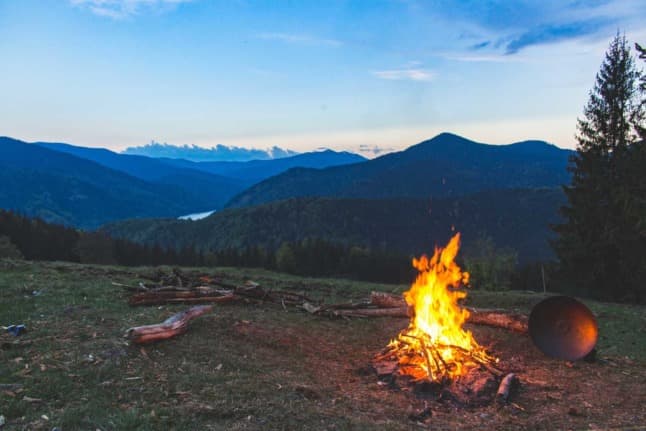Anyone who has lived in Switzerland knows that (weather permitting) families gather together to celebrate this holiday in practically every town and village.
Beyond the usual meals of grilled sausage, bread, and wine, as well as fireworks displays organised by local communities across Switzerland, some other customs and traditions are part of the August 1st festivities as well.
Parties on the meadow where Switzerland was born remain a popular option, while bonfires and brunch are contemporary symbols of Swiss National Day.
READ ALSO: Why most of the country will celebrate without fireworks this Swiss National Day
When did Switzerland first celebrate its birthday?
On Sunday, August 1st, Switzerland will be 730 years old, but it didn’t actually first celebrate its birthday until 1891.
It may be that Helvetians of that time had too much on their plate creating the new state and ensuring their autonomy to throw elaborate birthday parties.
‘Sister republics’: The US Constitution’s surprising Swiss origins
Be it as it may, that first celebration was intended as a one-off event to commemorate the nation’s 600 anniversary. It was revived as an annual event in 1899 and became an official public holiday in 1994.
The decision to make the day a holiday was made in the most Swiss way possible - a referendum.
Switzerland's birthplace on the Rütli meadow
The official part of the celebration takes place on the Rütli meadow above Lake Lucerne.
This is considered the birthplace of the Swiss nation because that’s where cantons of Uri, Schwyz and Nidwalden - the country's founding cantons - are believed to have signed the legendary pledge of alliance in 1291.

They promised to “assist each other by every means possible against one and all who may inflict on them violence or injustice within their valleys and without”. Nothing neutral about that.
In 2021, the celebration is set to be limited to 600 people, due to pandemic measures.
The 2021 edition includes a special commemoration of women's suffrage, with 2021 being the 50th year since women were given the vote at a federal level in Switzerland.
EXPLAINED: What happened after Swiss women got the right to vote in 1971?
Celebrations at Europe's largest waterfall
But other places have a strong connection to August 1 as well.
One is the Rhine Falls near Schaffhausen, which is the largest waterfall in Europe by volume of water.
From mid-19th century onwards, the waterfall has been illuminated on special occasions, including on August 1.

Fireworks over the Rhine Falls. Photo: Christof Sonderegger/Swiss Tourism
Farmer’s brunches
This custom doesn’t go back all the way to 1291, but it is nevertheless very popular in modern Switzerland.
While nobody is quite sure where the brunch tradition came from, it sprung up in the mid-1990s through a network of farmers who wanted to offer their wares to the increasingly urbanised Swiss population.
The tradition gained popularity due to the warm August weather and the comparative low cost of brunching on a farm in notoriously expensive Switzerland, while city dwellers also enjoy the tradition as a way of getting their kids familiarised with where cheese, eggs and meat come from.
READ MORE: What is actually ‘cheap’ in Switzerland?
Farmers in communities around Switzerland organise morning or midday meals where homemade specialties from a particular region are served.
Brunch is held at more than 350 farms across the country between 9am and 1pm on Swiss National Day. Though hugely popular, you might still be able to find an available brunch – visit brunch.ch for details.
Pre-registered visitors can enjoy a copious buffet brunch of farm-grown products including cheeses, dried meats and homemade bread. “It's a great way to spend the day with strangers and meet some new people,” Little Zurich Kitchen's Wick told The Local.
It’s a lot of fun for everyone, including the kids, as many farmers offer horse carriage rides, petting zoos and other games and entertainment.

Brunch on a farm. Photo by Brunch.ch
Bonfires
Another Swiss tradition - and one which dates back a little longer than brunching - is lighting large bonfires which can be seen from far away.
Fire has a strong association with tradition in Switzerland - and particularly with Swiss National Day. On August 1st in the dark of the night, children from each town or village form a procession and walk through the streets carrying lit paper lanterns.
While bonfires are a clear cultural tradition, depending on who you ask there are a variety of reasons for why this has become so popular.
The bonfire predates Swiss National Day - and some believe it predates Switzerland itself, with bonfires being a Christian adoption of previous midsummer traditions.
According to Switzerland Tourism, “bonfires, mainly on hills and other elevated spots, commemorate the expulsion of foreign bailiffs in the 14th century, the news of which were spread in this manner in those days.”
Germany's Südkurier newspaper - which hails from the neighbouring state of Baden-Württemberg - sees it a little differently, writing that the tradition goes back to the 15th century, when bonfires were used to warn neighbouring towns and villages of the incursion of enemy troops.
The Luzerner Zeitung sees it relatively similarly, saying that bonfires were the easiest means of communication and would carry a variety of messages.
Over time, the notion of lighting fires to warn and communicate with neighbouring communities became a symbol of Swiss unity - and have retained their place to the modern day.
Happy August 1st, everyone!

Join the conversation in our comments section below. Share your own views and experience and if you have a question or suggestion for our journalists then email us at [email protected].
Please keep comments civil, constructive and on topic – and make sure to read our terms of use before getting involved.
Please log in here to leave a comment.